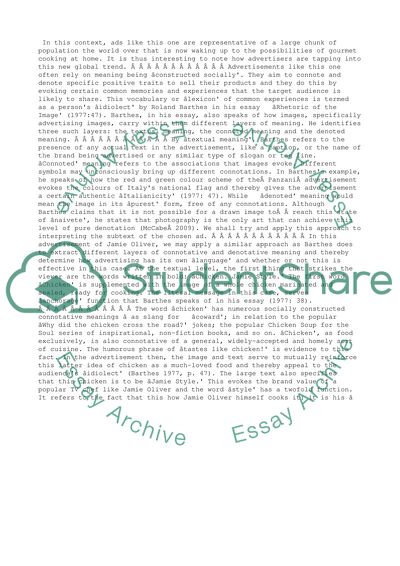Cite this document
(“Chicken. Jamie Style.: A Semiological Analysis of an Advertisement Essay”, n.d.)
Chicken. Jamie Style.: A Semiological Analysis of an Advertisement Essay. Retrieved from https://studentshare.org/management/1461569-chicken-jamie-style-a-semiological-analysis-of-an-advertisement
Chicken. Jamie Style.: A Semiological Analysis of an Advertisement Essay. Retrieved from https://studentshare.org/management/1461569-chicken-jamie-style-a-semiological-analysis-of-an-advertisement
(Chicken. Jamie Style.: A Semiological Analysis of an Advertisement Essay)
Chicken. Jamie Style.: A Semiological Analysis of an Advertisement Essay. https://studentshare.org/management/1461569-chicken-jamie-style-a-semiological-analysis-of-an-advertisement.
Chicken. Jamie Style.: A Semiological Analysis of an Advertisement Essay. https://studentshare.org/management/1461569-chicken-jamie-style-a-semiological-analysis-of-an-advertisement.
“Chicken. Jamie Style.: A Semiological Analysis of an Advertisement Essay”, n.d. https://studentshare.org/management/1461569-chicken-jamie-style-a-semiological-analysis-of-an-advertisement.


